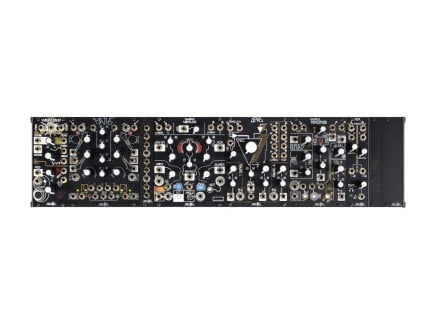There are many ways to play a synthesizer, but we don't know anyone else who approaches playing a modular synthesizer quite like the talented artist and researcher Ivana Dama. In our most recent video, Ivana takes full control over the Make Noise Tape and Microsound Music Machine and Strega with her eyes...yes, you've heard that right. Ivana developed Command and Control as her thesis project, and with it, she set out to explore the possibilities of interacting with musical instruments using nothing but one's eyes. Using a custom pupil tracking algorithm in Max, Ivana transforms the tiny movements behind the cornea of the eyes into control data that can then be mapped to play a variety of musical instruments ranging from software plugins to hardware synthesizers, and even unique electro-acoustic music machines (something she actually did develop to accompany the initial presentation of the project). Of course, given how interesting the idea is, we couldn't just pass by, and we have invited Ivana to collaborate with us on a video where she would use her unique controller to play a modular synthesizer. And for additional depth of the matter, we also did a little interview with Ivana, talking about the project, her background, and her artistic vision in general. Please enjoy!
Background and Inspirations
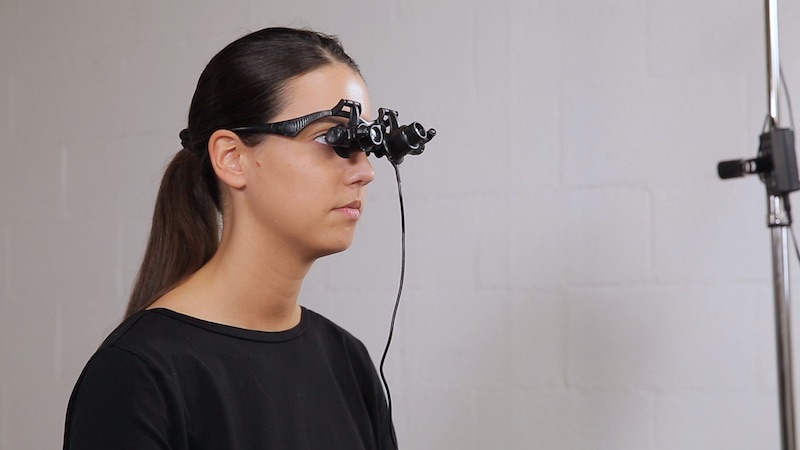
Eldar Tagi: Hi Ivana. We are very excited about your project, and our collaboration. Let's start with your background. Can you tell us about yourself—where do you come from, and what do you do?
Ivana Dama: I’m a sound artist and researcher currently working and living in Los Angeles. I was born and raised under the post-communist regime in Belgrade, Serbia shortly after the end of the civil war and during the time of NATO bombing. I recently graduated from UCLA's School of Arts and Architecture in the Design Media Arts and Digital Humanities department. My art practice includes audio-video installations, robotics, web projects, as well as music performances.
ET: What and/or who do you consider to be your main sources of inspiration? What drives your creative practice?
ID: My interest in modular synthesizers began in 2018 in New York City when I was visiting the Control store in Brooklyn. I curiously walked in, expecting that I would be out in 15min since I had no idea what to ask and where to start. I met musicians and composers Robert Aiki Aubrey Lowe and Jahiliyya Fields, who truly changed my life without probably knowing. Both of them were so excited to show me all the different possibilities with modular synths, and I ended up spending over three hours in their store. I felt the sense of community and genuine support and encouragement to start diving into this world.
I find true inspiration in Laurie Spiegel's work, especially her album "The Expanding Universe" and her early software work from 1986 called "Music Mouse - An Intelligent Instrument." I recently created a project called AudioMap. I was interested in allowing the public to create music compositions by changing their GPS location, similarly to "Music Mouse," where the audience is able to compose by moving their mouse on the screen. I enjoy reading essays by David Toop and learning about improvisation and experimentation in music. Here is a shortlist of artists that inspired my sound work: John Cage, Éliane Radigue, Brian Eno, Pauline Oliveros, Steve Reich, Ryuichi Sakamoto, Alvin Lucier, Holly Herndon...
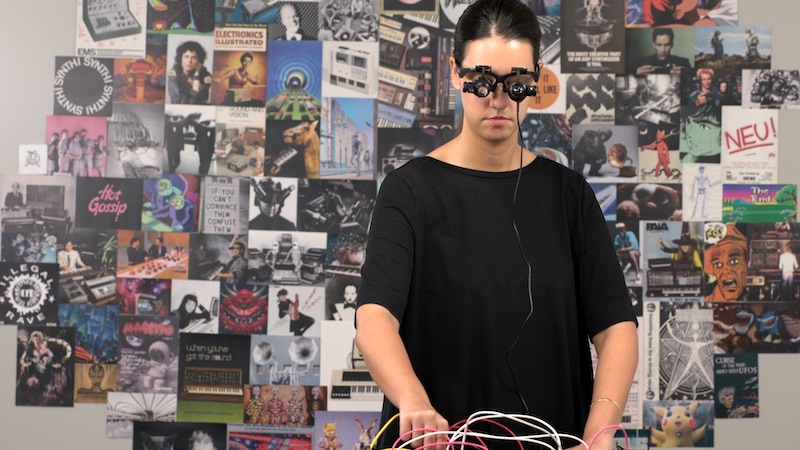
Art and Technology
ET: Is there a central theme that runs through your artistic practice or does it change for you entirely from project to project?
ID: My work revolves around the general themes of social, economic, and ecological inequalities. In my practice, I explore the possibilities of sound and space ranging from microscopic, architectural, and satellite scale. I always try to incorporate these ideas into my projects, but the themes always slightly overlap and change for each particular piece.
ET: Technology always seems to play a significant part in your projects. What role does it play in your work? What I specifically mean—is technology strictly a tool for realizing your ideas or do you tend to get inspired by a certain technology itself to start the project?
ID: This is probably the most challenging question for me since I don't want to admit that technology is strictly a tool—often, it comes as an inspiration for communicating specific topics or ideas. I try not to have a black or white answer to this question since the truth is somewhere in between. Custom software writing can be used as an art form where programming and composing are combined into a single process.
On Working With Sound
ET: What role does sound play in your practice? What do you like about sound as an artistic medium in particular?
ID: I began my journey as a visual artist, and I always enjoyed the sound, but it was never part of my practice until 2017 when I saw a project called "Giant" made by an artist from Serbia. In her project, Milica Zec draws upon her experience growing up in war-torn Serbia during the bombing in 1999. Milica and I share a similar experience of living in a shelter during that time, and I previously did a few visual projects related to the same subject. Seeing her reconstruction of this event was absolutely stunning to me, but sound more than anything brought back my early memories. I begin to shake and feel very uncomfortable hearing the sounds of bombs and sirens. At that moment, I decided to focus my work on sound. Previously I would see millions of images and videos of the event, but it never made me feel the same as hearing these specific sounds. My eyes almost become less sensitive due to the overstimulation of images in the media and our daily lives. After realizing that sound is an invariably important part of my work, I have since begun exploring audio's potential. My work became an ongoing experiment in which I wasn't only focused on the final project; the process became an essential aspect of my work.
ET: As a follow-up to the previous question—what do you find to be the challenges of working with sound?
ID: There are numerous challenges for me when working with sound. One of the major ones is that I don't have a strong background in music, and I see that as both a challenge and an advantage. I feel like I'm stepping into this world with some fresh ideas, and I often try to challenge conventional ways of thinking about composition and sound. Another major problem is that I often don't feel comfortable being a woman in this field. I attended numerous events where the rest of the performers thought I came with someone, and people usually assume that you are not the performer because of gender or appearance. Women, in general, face many challenges in the male-dominated music industry, and I genuinely hope that this will change with an increased presence of women and other minorities. I have to say that Perfect Circuit is one of the very few places where I felt absolutely different energy, and I appreciate that women, including myself, are part of the recent video projects.
Controlling Instruments With Eyes
ET: Let's talk about your project—Command and Control. Can you tell us what it is, how it works, and where did the idea come from?
ID: Command and Control is a project that explores the idea of playing a musical instrument with your eyes—using custom pupil tracking software to send a MIDI signal. The project reflects on the power that we have in eye movements that we often take for granted. The goal is to focus on involuntary blinking and realize that our control is limited and that there is only so long that we can go without blinking. The idea for this project came to me at the beginning of the pandemic, where we all became aware of how much the world can shift in one blink of an eye. I wanted to experiment with this idea, and initially, I wanted to create a sound sculpture where the audience would be able to physically move parts of the sculpture by moving their eyes. Unfortunately, this idea hasn't been developed yet since it became unsafe to have a wearable headset in a gallery space during the pandemic.
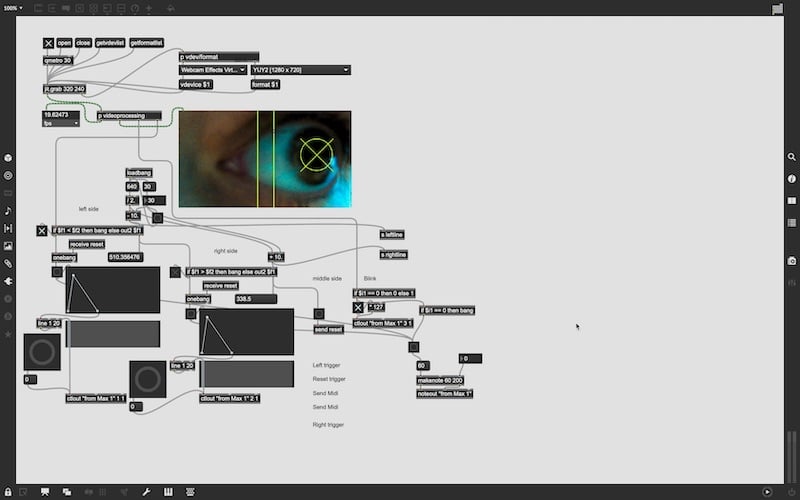
ET: As far as I understand, the core of the piece is the controller, and the sound source element is flexible. Does your approach to mapping the control to sound change instrument-by-instrument? If so, how?
ID: Yes, that's entirely correct—the core of the project is input or pupil tracking, and output can be changed and used in all different ways. During my performance at Will Geer Theater, I created a custom percussion instrument consisting of bamboo xylophone and glass bowls; each part of the instrument would be triggered by drum sticks connected to servo motors. By setting up a set of rules, the performer is able to make precise decisions such as trigger multiple motors at the same time or trigger a combination of movements. Later, I began to experiment with possibilities of playing different instruments either by physically moving motors that would trigger the sound or by using digital MIDI signals and activating different effects or samples in Ableton. When I was invited to collaborate with Perfect Circuit on this project, I immediately thought of using modular synth as my output. To make this process possible, I used a MIDI to CV Eurorack module that would transfer my digital input from a Max patch to an analog synthesizer.
ET: For our video your choice fell on Make Noise Tape And Microsound Music Machine as a sound source. What was particularly interesting for you working with that instrument?
ID: Tape and Microsound Music Machine offers such a wide variety of tones in one device. I was particularly interested in exploring the idea of a feedback patch where the output of one module is patched to the input of another module, and the output of the second module is patched to the input of the first module. I particularly used the QPAS module and Mimeophon module to create this simple feedback, and I later automated level control using the MATHS module.
I combined Tape And Microsound Music Machine with another Make Noise device—Strega. These two devices, when combined together, really opened the whole world of possibilities for experimentation. I connected my gate output of the MIDI to the CV module with Strega. I was so impressed with touch bridges and gateways; by touching one or more of these square gold plates and one or more circular gold plates, I manually agitated the Strega with my eye movement and touch.
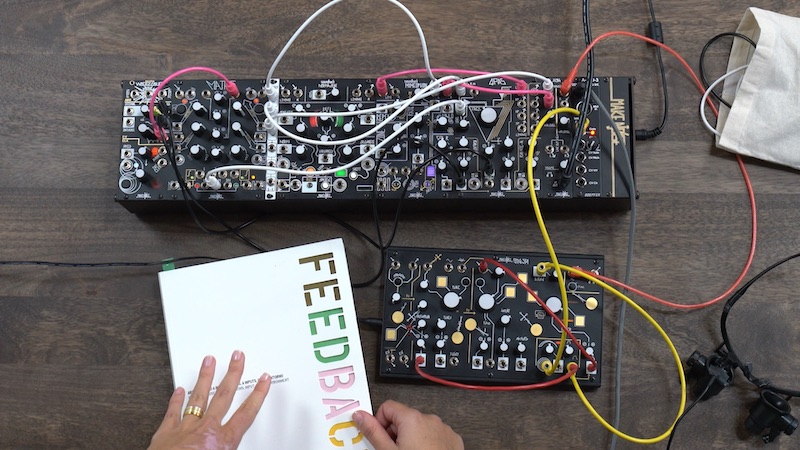
ET: What is next for you? Do you have any new projects coming up?
ID: I have a couple of performances coming up in the next months and it’s best to follow me on social media to find out about the exact locations and dates of my upcoming projects. I’m planning to show this piece in Silver Lake in November, and I will follow up with more details on my Instagram in the next few weeks.
ET: What are the best places to follow your work?

